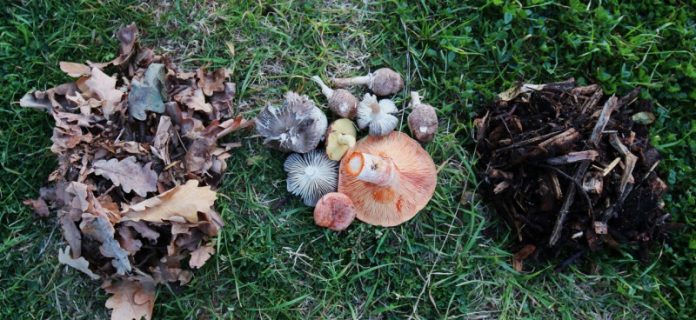The bodies of all living things, from the largest trees to the smallest microorganisms are mostly made of carbon, organised in microscopic chains called ‘polymers’. These carbon polymers take different forms, and each form breaks down in our compost in a different way and at different times.
Let’s take a look at three common carbon polymers that make up so many things on our planet.
Cellulose is the most common carbon polymer on Earth, the building block of leaves and stems of the plants that make our planet living. Cellulose is also a pretty simple polymer, so can be broken down quite easily by many creatures from termites to compost bacteria.
So, cellulose will be the carbon consumed and converted first in our compost piles, quickly becoming the energy source and building blocks for the bacteria that proliferate early on in the compost process. We need a good quantity of cellulose if we want our compost bacteria (and fungi to a lesser degree) to make a hot compost.
Chitin (pronounced KY-tin) is the second most abundant carbon polymer on the planet, but much less well known. Chitin makes up the outer casings of insect and crustacean bodies, as well as the structure of fungi. Chitin is a little more complex in its make up than cellulose so is usually a little slower to break down.
We probably won’t be adding mountains of old mushrooms or crayfish shells to our composts, but it will be there as a component in our pile and the carbon in chitin will be feeding our compost microbes after most of the cellulose is consumed.
Lignin is the toughest polymer on our list, it’s the persistent part of wood. Lignin is the third most common carbon polymer on the planet, and it is where lots of land-based carbon is stored (along with the reserves of coal, oil and gas that we are fast depleting).
Lignin is a more complex polymer than cellulose or chitin, bacteria can’t eat it, but forms of fungi have worked out a way of breaking down and consuming the carbon in lignin. Big chips or chunks of lignin-rich wood in our compost might take years to fully break down. This is why fungi play such an important role in the later stages of composting, long after the bacterial feeding frenzy consumed all the cellulose and chitin, the fungi slowly work their way through the lignin rich woods.
So, what forms of carbon are best in our compost pile, cellulose, chitin or lignin?
The answer is, as it always seems to be, a good balance. Probably the best balance is the same as what the earth has, mostly cellulose, then chitin and lastly lignin. Think about adding a diversity of carbon-rich ingredients to your compost to feed the compost microbes, right now and over the duration of the compost’s life cycle.
– Joel Meadows works with *Yes In My Back Yard, (YIMBY), a community-scale composting initiative in Castlemaine and surrounds. Send questions or comments to hello@yimbycompost.com, or to book in for a compost workshop!








